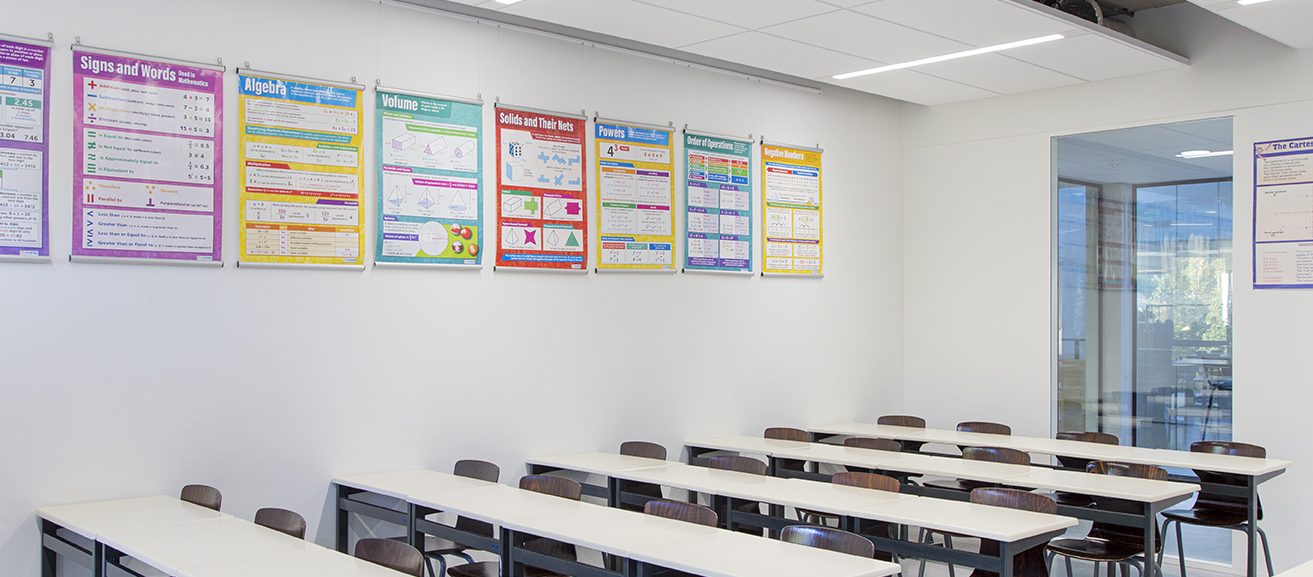
Test Formats
Forms of testing for years 1 through 3
During the first three years of school, the following forms of testing are used:
Written and oral tests
These tests are often short and the number of questions is limited. Oral tests usually involve only a few students per lesson; written tests involve the entire class.
Test and final test
These are written tests, announced at least a week in advance. Because they involve a completed portion of the material, they involve more questions than a rehearsal. Often these tests take an entire lesson. Because a test and final test are about the understanding of the subject matter, they count more heavily than the tests in determining the report grade.
Common test during the testing week
This test:
- Is the same for all students of a given grade and education type;
- is announced at least one week in advance;
covers the subject matter of a longer period; - is preferably a completed part of the subject matter;
- includes a larger number of questions covering the total subject matter;
- usually takes a whole class and sometimes two class hours;
- must (because of its communal nature) be approved by at least two subject teachers.
In addition to these forms of testing, there are also projects, excursions with an assignment, trips with an assignment, language village, reports, reading files and art files.
Test forms in the upper school
The test forms listed below are administered to the students of 3- and 4-(t)mavo, 4- and 5-(t)havo and 4-, 5- and 6-(t)vwo. Students in these grades must be able to demonstrate the ability to process a larger amount of material and have an understanding of the subject matter.
How heavily the assessments of the various forms of tests are weighted is stated in the Schedule of Tests and Completions. Four testing weeks are scheduled each school year.
For upper school students, the knowledge of the subject matter is tested as follows:
PTA test
This test is part of the school examination. It consists of written or oral questions and assignments, or a practical assignment. The grade for this test enters the examination file and counts toward the final exam grade for the subject in question. School exam tests can count toward the report grade.
Progress test
This test counts toward the report grade, but is not included in the exam file.
Manual component
Various types of assignments are carried out during the practical component. These assignments are evaluated as ‘satisfactory’ or ‘not satisfactory’. A student who has not carried out all the ‘satisfactory’ sections cannot be promoted to the next grade and cannot take part in the final central exam.
Profile paper vwo and havo
The profile paper is part of the examination dossier. It is a kind of culmination of everything the students have learned in terms of knowledge and research skills in the various subjects. The profile paper is made under the guidance of a teacher. This guidance is laid down in steps and takes place via the electronic learning environment. The way students work on the profile paper and the degree of independence are included in the final grade. Students start working on their profile paper in 4-(t)havo and 5-(t)vwo. It has a study load of 80 hours. A grade is given for the profile paper and its presentation, which forms part of the combination grade.
Profile paper mavo
This paper is about the profile the student has chosen. It has a study load of 20 hours. It is assessed with a good, sufficient or insufficient grade. Students who fail the profile paper will not receive a diploma.
Practical assignment
This paper is smaller than the profile paper. A practical assignment covers a specific part of one or more subjects. It can also be a research project. Sometimes the practical assignment is presented.
Assessment rules and grades
After a written test, students receive their grades within two working weeks. These grades are entered into the SOMtoday system. Assignments and practical tasks have a different assessment period. The test is discussed with the students. Afterwards, the teacher can collect the completed tests.
PTO: Assessment Programme for Lower Secondary Education
At our school, we believe it is important that pupils are prepared for their tests and the rest of their school career in a clear, fair and educational manner. That is why, starting this school year, we will be working with a PTO: the Assessment Programme for Lower Secondary Education.
Reason
Until now, we have noticed significant differences between teachers in the lower school in terms of the number of tests, the way they are administered and the times at which they are scheduled. As a result, pupils sometimes had many tests at the same time, or, conversely, spread out outside of test weeks. This led to confusion, unnecessary test pressure and, in some cases, empty test weeks. It was difficult for both pupils and parents to know exactly what was expected and when.
Why a PTO?
The PTO changes this. By working with a clear assessment programme, we create more clarity and fairness: all pupils receive the same information, the same expectations and assessments that are aligned as much as possible.
The programme is transparent: it is clear in advance when tests will be held, what will be tested and how much weight the test will carry. This allows pupils to plan better and learn in a more focused way.
In addition, the PTO ensures a continuous learning pathway to the Programme of Testing and Assessment (PTA) in the upper years. We build knowledge, skills and testing skills step by step.
Finally, it helps us as a school to monitor the quality of tests and test moments and to communicate this more clearly to parents and pupils.
With the PTO, we are taking a step towards a stronger, more transparent and more predictable learning environment for everyone.
Absent during a (PTA) test
If a pupil is absent during a test for a valid reason, he or she may retake the test.
If a pupil is ill during a PTA test in the test week, parents/guardians must sign a sick note form before 12 noon the following day. This can be done at the school reception.
Promotion standards
The promotion standards will be published on our website in November at the latest.

